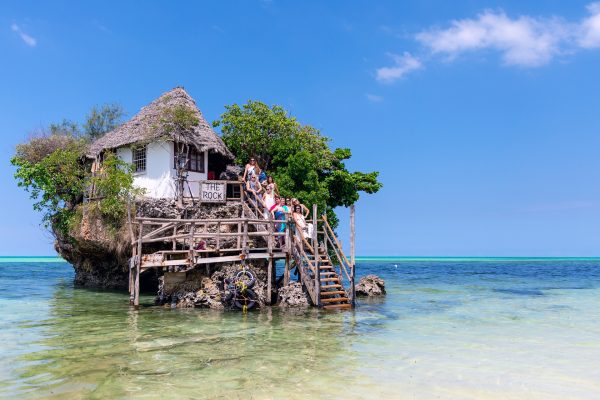Zanzibar
Overview
When it’s time to rinse off the dust of the plains, there is really no better place to be than the tropical Swahili Coast and Zanzibar Island, infused with natural beauty and a heady mix of African, Arabian, Persian, and Indian cultural influences.
The shimmering coastline of palm-fringed white beaches and reefs is indented with creeks and mangroves while the warm aquamarine waters are beaded with tropical islands. Baobab, cashew, and mango trees and fragments of ancient coastal forest color the narrow strip between coast and uplands green. When palms and casuarinas frame your view of sand, sea, and lateen-rigged dhows, it is time to breathe out and relax, soothed by the balmy onshore breeze.
Summary
Tick off your bucket list with these
Tanzanian experiences
Immerse yourself in the culture, exploring local cuisines, wandering the markets, learning a new language or snorkelling in the depths of the Indian Ocean - all whilst being surrounded by untouched nature and pristine sandy beaches.
Safari book nowAttractions
Swahili Culture
The monsoon winds of the Indian Ocean have shaped the history and culture of this sparkling coastline, carrying traders and seafarers from Arabia, Persia, India, and even China to and from Africa on their seasonal routes.
Swahili language and culture blend African and Eastern influences in a fusion that is both exotic and easy on the senses.
The Kilwa Sultanate that once ruled the coast from Kenya to Mozambique fragmented into several city-states that flourished with the trade winds. The breezes of the fabled island of Zanzibar still carry the heady scents of spices; while Swahili culture infuses Stone Town’s winding alleys with taarab music, magnificent carved doors, and hospitable people. Echoes of a sadder history linger in the ruins and caves once used by slavers all down the coast.
Over 50 – Numbers of islands and islets making up the Zanzibar archipelago
12 hours-The length of each day and night here on the equator




